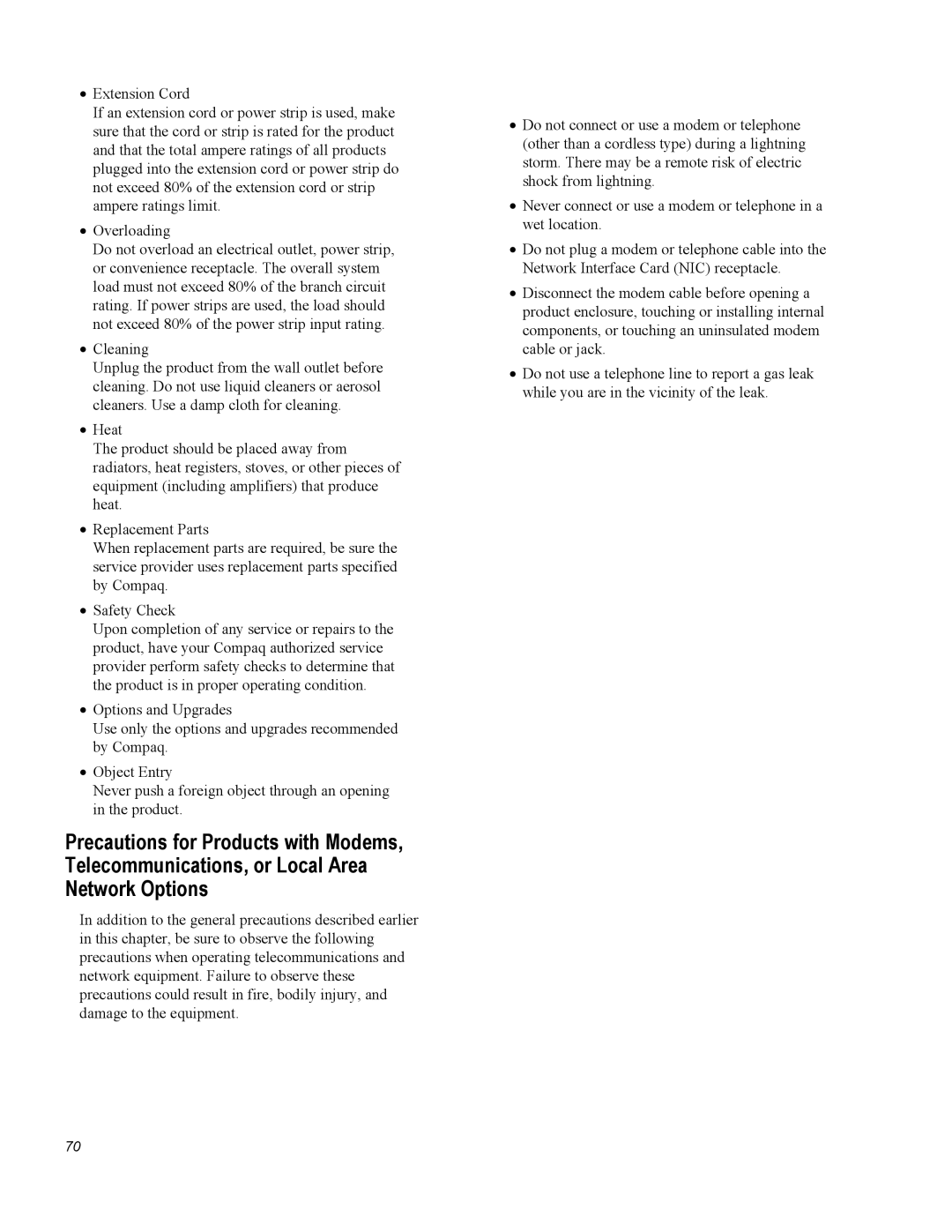•Extension Cord
If an extension cord or power strip is used, make sure that the cord or strip is rated for the product and that the total ampere ratings of all products plugged into the extension cord or power strip do not exceed 80% of the extension cord or strip ampere ratings limit.
•Overloading
Do not overload an electrical outlet, power strip, or convenience receptacle. The overall system load must not exceed 80% of the branch circuit rating. If power strips are used, the load should not exceed 80% of the power strip input rating.
•Cleaning
Unplug the product from the wall outlet before cleaning. Do not use liquid cleaners or aerosol cleaners. Use a damp cloth for cleaning.
•Heat
The product should be placed away from radiators, heat registers, stoves, or other pieces of equipment (including amplifiers) that produce heat.
•Replacement Parts
When replacement parts are required, be sure the service provider uses replacement parts specified by Compaq.
•Safety Check
Upon completion of any service or repairs to the product, have your Compaq authorized service provider perform safety checks to determine that the product is in proper operating condition.
•Options and Upgrades
Use only the options and upgrades recommended by Compaq.
•Object Entry
Never push a foreign object through an opening in the product.
Precautions for Products with Modems, Telecommunications, or Local Area Network Options
In addition to the general precautions described earlier in this chapter, be sure to observe the following precautions when operating telecommunications and network equipment. Failure to observe these precautions could result in fire, bodily injury, and damage to the equipment.
70
•Do not connect or use a modem or telephone (other than a cordless type) during a lightning storm. There may be a remote risk of electric shock from lightning.
•Never connect or use a modem or telephone in a wet location.
•Do not plug a modem or telephone cable into the Network Interface Card (NIC) receptacle.
•Disconnect the modem cable before opening a product enclosure, touching or installing internal components, or touching an uninsulated modem cable or jack.
•Do not use a telephone line to report a gas leak while you are in the vicinity of the leak.
